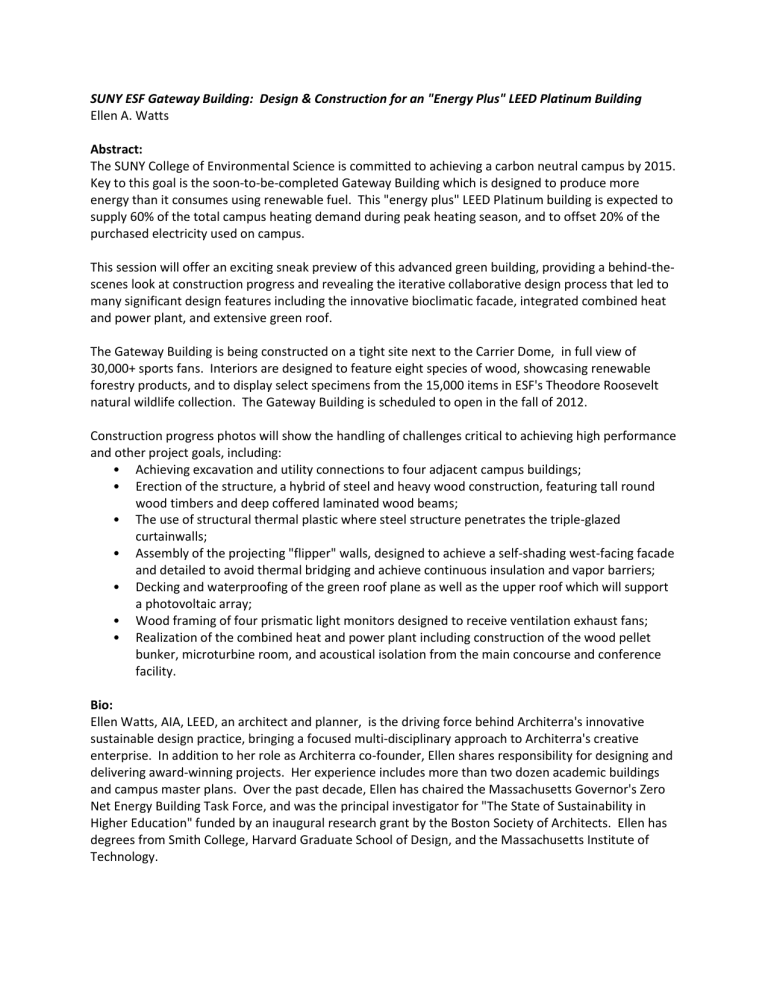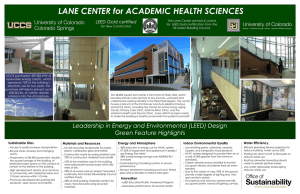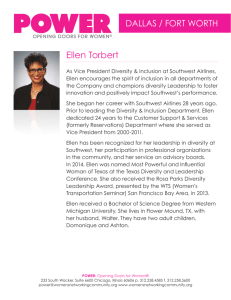Document 10684857

SUNY ESF Gateway Building: Design & Construction for an "Energy Plus" LEED Platinum Building
Ellen A. Watts
Abstract:
The SUNY College of Environmental Science is committed to achieving a carbon neutral campus by 2015.
Key to this goal is the soon-to-be-completed Gateway Building which is designed to produce more energy than it consumes using renewable fuel. This "energy plus" LEED Platinum building is expected to supply 60% of the total campus heating demand during peak heating season, and to offset 20% of the purchased electricity used on campus.
This session will offer an exciting sneak preview of this advanced green building, providing a behind-thescenes look at construction progress and revealing the iterative collaborative design process that led to many significant design features including the innovative bioclimatic facade, integrated combined heat and power plant, and extensive green roof.
The Gateway Building is being constructed on a tight site next to the Carrier Dome, in full view of
30,000+ sports fans. Interiors are designed to feature eight species of wood, showcasing renewable forestry products, and to display select specimens from the 15,000 items in ESF's Theodore Roosevelt natural wildlife collection. The Gateway Building is scheduled to open in the fall of 2012.
Construction progress photos will show the handling of challenges critical to achieving high performance and other project goals, including:
• Achieving excavation and utility connections to four adjacent campus buildings;
• Erection of the structure, a hybrid of steel and heavy wood construction, featuring tall round wood timbers and deep coffered laminated wood beams;
• The use of structural thermal plastic where steel structure penetrates the triple-glazed curtainwalls;
• Assembly of the projecting "flipper" walls, designed to achieve a self-shading west-facing facade and detailed to avoid thermal bridging and achieve continuous insulation and vapor barriers;
• Decking and waterproofing of the green roof plane as well as the upper roof which will support a photovoltaic array;
• Wood framing of four prismatic light monitors designed to receive ventilation exhaust fans;
• Realization of the combined heat and power plant including construction of the wood pellet bunker, microturbine room, and acoustical isolation from the main concourse and conference facility.
Bio:
Ellen Watts, AIA, LEED, an architect and planner, is the driving force behind Architerra's innovative sustainable design practice, bringing a focused multi-disciplinary approach to Architerra's creative enterprise. In addition to her role as Architerra co-founder, Ellen shares responsibility for designing and delivering award-winning projects. Her experience includes more than two dozen academic buildings and campus master plans. Over the past decade, Ellen has chaired the Massachusetts Governor's Zero
Net Energy Building Task Force, and was the principal investigator for "The State of Sustainability in
Higher Education" funded by an inaugural research grant by the Boston Society of Architects. Ellen has degrees from Smith College, Harvard Graduate School of Design, and the Massachusetts Institute of
Technology.
Architerra was founded for the express purpose of advancing sustainable design across a wide range of project types. The firm was founded in 2004 by Ellen Watts and Dan Arons, soon joined by a third partner Daniel Bernstein, all veterans of large Boston area firms. Architerra's staff of 15 is 100% LEED accredited. Now in its eighth year, Architerra has completed or has under construction 12 buildings with a total construction cost of $150 million and a 10 master plans with a total construction cost of more
$200 million. Architerra's work has been recognized by 12 design awards, including a 2008 AIA/COTE
Top Ten Green Building award for the Garthwaite Center at the Cambridge School of Weston.




